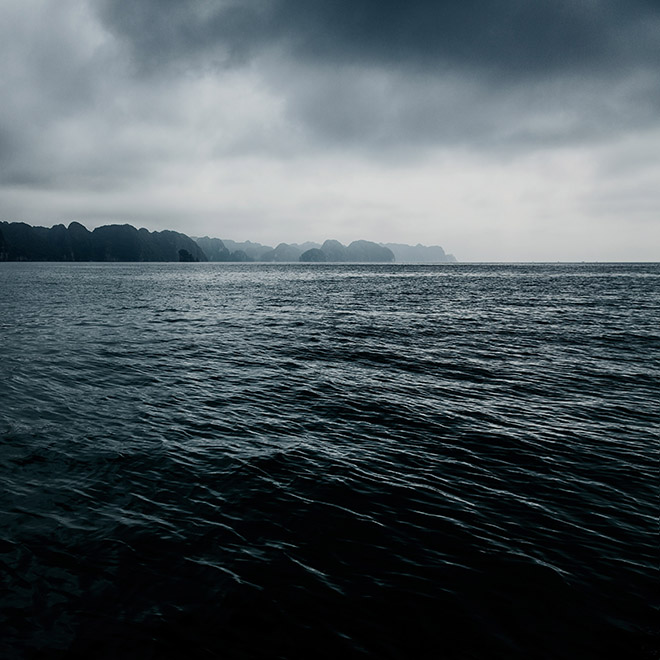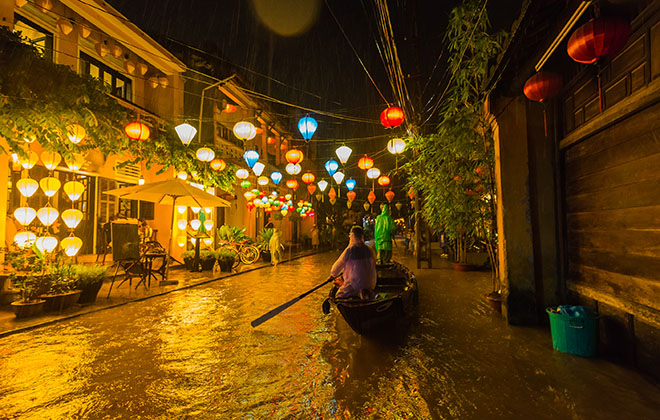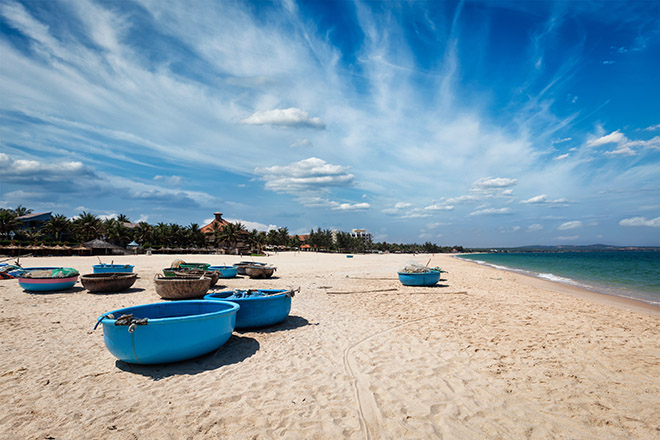Are you planning for a trip to Vietnam in November? You might be curious about how the weather in Vietnam is like during this time of the year to avoid unwanted risks and make use of all your time in Vietnam.
Therefore, I would like to give you some details on the weather in the upcoming November.
How’s Vietnam weather in November
Overview
In November, the cold air will cover the North, the temperature will decrease in the Northern provinces and there might be typhoons and tropical depressions hit the area in the South.
Along with that, the tropical convergence strip continues to tend to maintain activity in the middle and southern areas of the South China Sea. This convergence is likely to form storms or tropical depressions (tropical low pressures) and will affect the mainland of our country, concentrated in the Central and Southern regions.
In the Northern region
On the land area
The typical weather of this region’s climate is cold weather, the heat level starts to decrease, the average temperature is about 21oC, which can be reduced to 17-20oC from mid-month onwards. It’s dry and sunny. In both the plains and the mountains, there is scattered rain, often at the beginning of cold spells.
Although there is no specific forecast, on average, the area will receive about 4-5 cold air waves in November. According to the latest assessment, the North will have a warmer winter and is likely to be warmer than that in winter in 2018.
In the seaside area
During this period, there may be storms because this is typhoon season in Northen Vietnam. Travelers need to regularly update the weather information for the most timely preparation.
National television channels, national English newspapers (Vietnamnews, Vnexpress….), are reliable news sources. In addition, Travel Sense Asia also regularly updates information directly on our website whenever there is a new storm.
Regarding the situation of storms operating in the East Sea, the Vietnam National Center for Hydrometeorological Forecasting said that from now until the end of 2019, it is likely that the storm density operating in the East Sea area is about 3-5 storms. There can be about 1-3 storms directly affect the mainland of our country, focusing on the Central and Southern regions.
Nguyen Hong Sinh, an expert of the Northeast Meteorological and Hydrometeorology Station said: “Due to the impact of the El Nino phenomenon, in the last months of 2019 the sea surface temperature is inclined to the hot phase”.

The seaside of Northen Vietnam can be affect by storms in November
Suggestions
In the Northern Vietnam, Sapa, Ha Giang and Moc Chau are in the suggestion list. Those destinations possess very pleasant weather, the weather is cooler yet there is still sun shining. You can admire the spectacular scene of the flowers blooming, the rice terrace blending (though not the best season) with the vagueness of clouds and fog when standing on the hills of these mountainous area.
Remember to bring coat or sweater with you because the temperature in the mountainous areas is 3-4oC than normal.
What to wear?
You should bring sweater, jacket and cardigan along with you during your journey in case the cold spells suddenly come when the temperature drop rapidly. Last year, the first cold spells come and can make the temperature drop 6 degree Celsius from around 27oC to 20 – 21oc just after one day.
Make sure you also bring a pair of sneakers or boots to keep your feet warm on these colds days. You might consider taking gloves, hat, and scarf if you notice the weather can get colder.
In Central region
On the land area
The Central and South Central regions can have heavy rains due to the influence of cold air combined with tropical disturbances such as typhoons and tropical low pressures.
Therefore, in November, tourists need to be aware of the risk of major floods in rivers, streams, flash floods and landslides, especially in mountainous areas with steep terrain and inundated areas.
In the seaside area
There may be high tides in the Central Coast. In addition, there will be a risk of strong winds, rising water due to cold air and high seas, storm or tropical depression.
The Central Highlands in November continued to have many rainy days due to the possibility that the tropical convergence strip tends to be strong in the area.

Hoi An in flooding season
Suggestions
Visiting provinces in the Central Vietnam in November is not highly recommended, however there are still alternatives of destinations for outdoor activities on rainy days such as: visiting classical buildings or religious temples and pagodas. In Hue, the weather is stable with many rain all year, so you don’t have to consider about this destination.
Travelling from destinations to destinations can be interrupted on rainy days so you should check the weather carefully before going.
Note: In November, you should avoid visiting Hoi An because of the rainy season, which occur mostly in November and December. But on the other side, if you already had plan to visit this ancient city in this period of time, you can witness the way local people deal with flood.
What to prepare?
You should specially remember to bring raincoat with you if you plan to visit Central Vietnam in November because you might often encounter rains.
Moreover, bringing a jacket along is also suggested since the rains can result in drop in the weather temperature.
In Southern region
On the land area
The average amount of rainfall during November in Ho Chi Minh City will be rapidly decreasing with the temperature ranging from 24-27oC
This time is also dry season in the Southern Viernam, so the weather is quite pleasant with low humidity and sunshine.
In the seaside area
South Vietnam is likely to suitable for almost all kinds of tourist activities. However, November is considered to be a suitable time to head to the southern coast, such as beaches in Mui Ne or Phu Quoc island. You can enjoy the best time of your trip there where the seas offer calm waves and cool water.
You should note that this is the peak season when the Southern Vietnam receives many international tourists so that you should book all the services early.

Southern Vietnam seaside is a suitable destination to visit in November
What to wear?
Coming to Southern Vietnam in November means you cannot miss all the beautiful beaches and islands here you bringing swimsuits and summer clothes is definitely a suggestion.
Besides, you should remember to bring sunglasses, sunscreen to protect yourself from getting sunburnt.
However, the weather forecast mainly focus on general weather features and for long term, so remember to check the weather carefully before you decide to visit somewhere. We will keep updating more details on the weather in November and let you know.
Read more:




Comments